Growing Blog
Different Types Of Grain Spawn
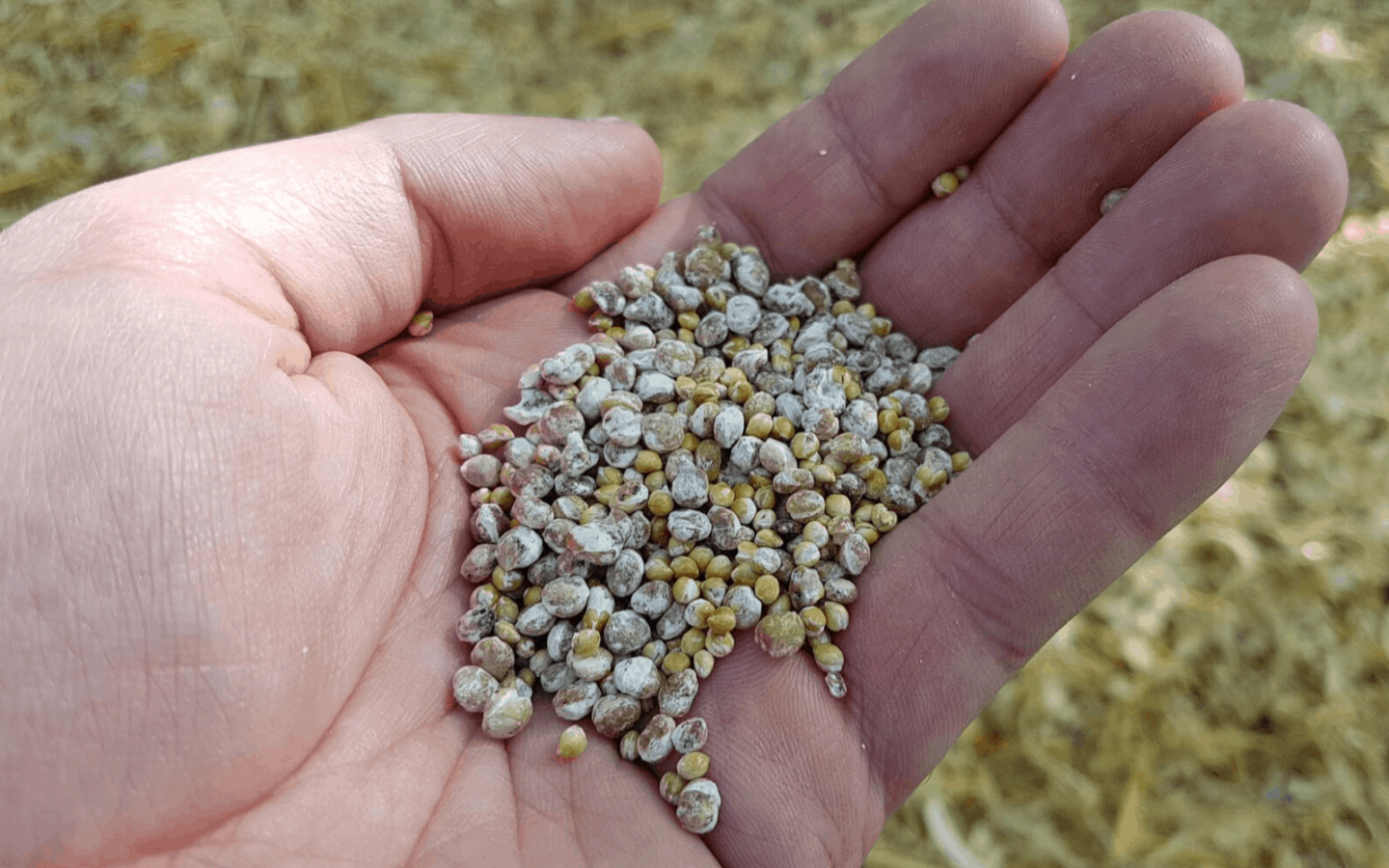
When making grain spawn, the gold standard has always been rye grain.
And that makes sense.
Rye is widely available, hydrates well- and is universally loved by almost any mushroom species.
But what if you can’t get rye grain? Is there any other grain that’s up to the task?
Definitely.
In fact, you can make amazing spawn out of a variety of different grains, some of which you probably have in your pantry right now.
What Is Grain Spawn?
Grain spawn can be thought of like “seeds” in mushroom cultivation. It is made by starting from either spores or a mushroom culture, which is then transferred to sterilized grain.
The mushroom mycelium then grows throughout the grain, feeding off the starchy goodness.
Eventually, the mushroom culture will fully colonize the grain, covering it in white mycelium.
From there, it can be broken up into individual grain kernels and mixed into a bulk substrate.
The mycelium will continue to grow from there- eventually producing mushrooms.
Why Does It Have To Be Sterilized?
Grain is highly nutritious- full of starch and sugars. When properly hydrated, it serves as an ideal food source for hungry mushroom mycelium.
Unfortunately, this also an ideal growing environment for mold and bacteria- which in most cases can grow much faster and stronger than mushroom mycelium. For that reason, the grain has to first be completely sterilized in order to kill off any mold spores or bacteria.
This is most often accomplished in a pressure cooker or autoclave by processing at 15PSI for 1.5 – 2.5 hours.
Pure mushroom mycelium added to sterilized grain has no competition, which allows it to grow and proliferate throughout the grain.
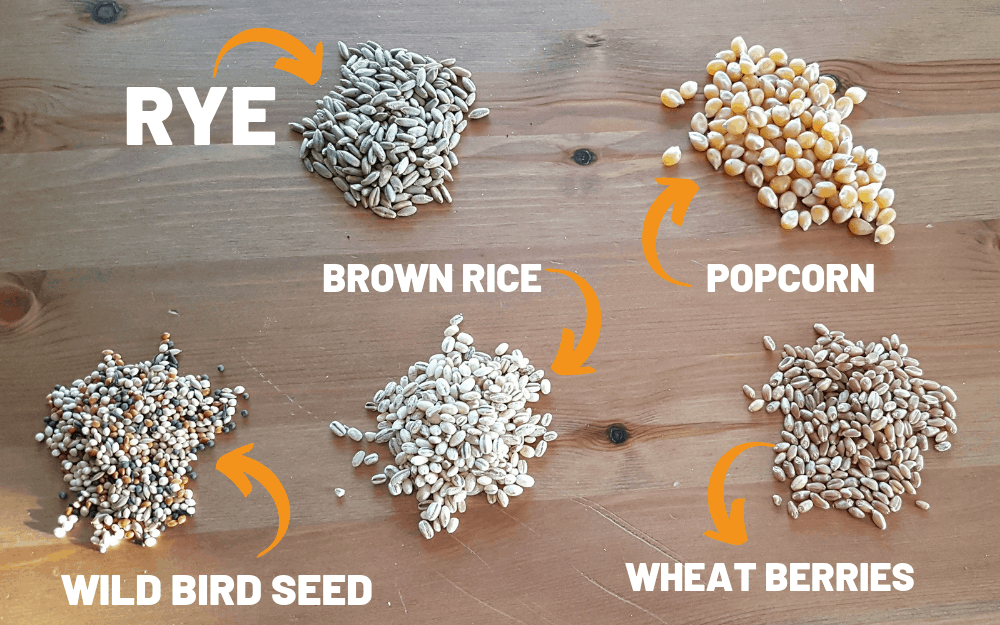
Different Types Of Grain Spawn
So what’s the best type of grain spawn for you?
Unless you are running a commercial farm, the best grain spawn is often what is available to you.
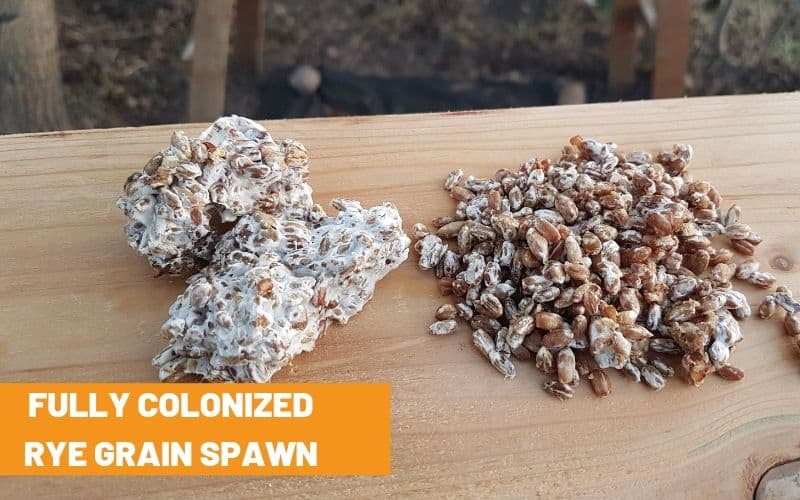
Rye Grain
If you have access to Rye, it will be your best choice most of the time.
It’s excellent at holding water (can hold more moisture than any other grain), and doesn’t often burst or get mushy when processed.
Also, mushrooms of all types seem to absolutely love rye as a source of nutrition.
That being said, unless you’re located near a farming community, it can be hard to find. You are also not likely to find it in small amounts at the grocery store, so it might not be the best choice for a small hobby grower.

Wheat Berries
Wheat berries (ie. wheat grain, wheat seeds), are also an excellent choice, and perform very similar to rye. They can be prepared using the exact same method as rye grain. The difference is that wheat cannot hold as much water, and are more likely to break when processed.
You can often find organic wheat berries at bulk food stores.
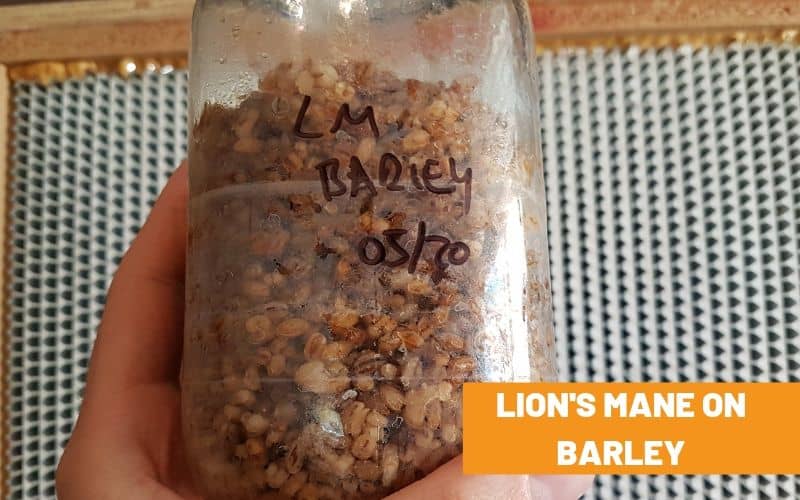
Barley
Barley is yet another cereal grain that works (kinda) for spawn.
You can tell by the picture that it is certainly not ideal. Mushy and, wet, and lots of broken grains.
Sorghum
Sorghum is commonly used by commercial growers. In other industries, Sorghum is used in animal feed. For that reason, commercial spawn producers can get non-human grade sorghum grain cheaply to be turned into spawn.
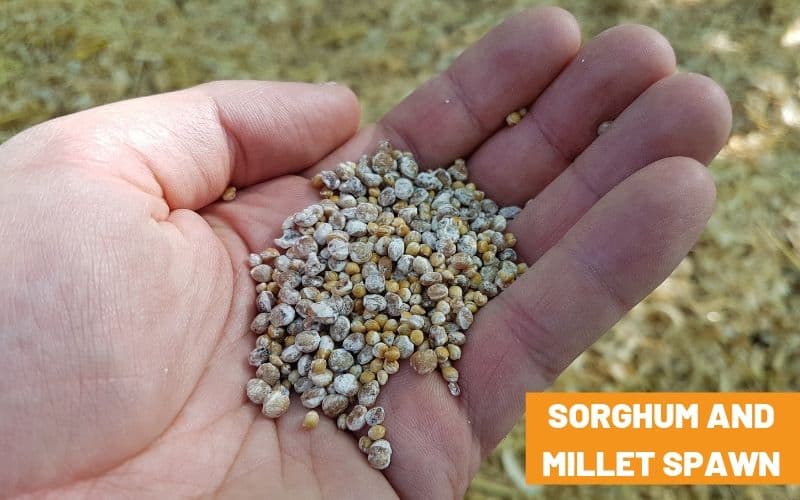
Millet
Millet is another wonderful grain for mushroom spawn.
Millet is the smallest of the grains, and provides a huge number of different “inoculation” points in your substrate.
Since it is so small, it is most often mixed with other grains to make spawn.
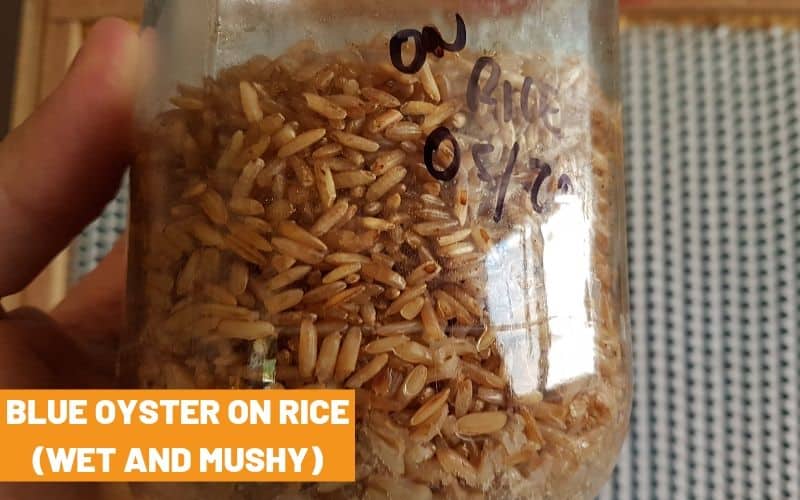
Brown Rice
Brown rice tends to get a little mushy/sticky when processed, and for that reason, it is typically not used by commercial growers.
For small scale hobby growers, however, brown rice can be a suitable choice.
Can I Use White Rice?
Although I wouldn’t blame you for trying, I just can’t recommend white rice. It is much to sticky and mushy, and will likely end up as a large clump after processing.
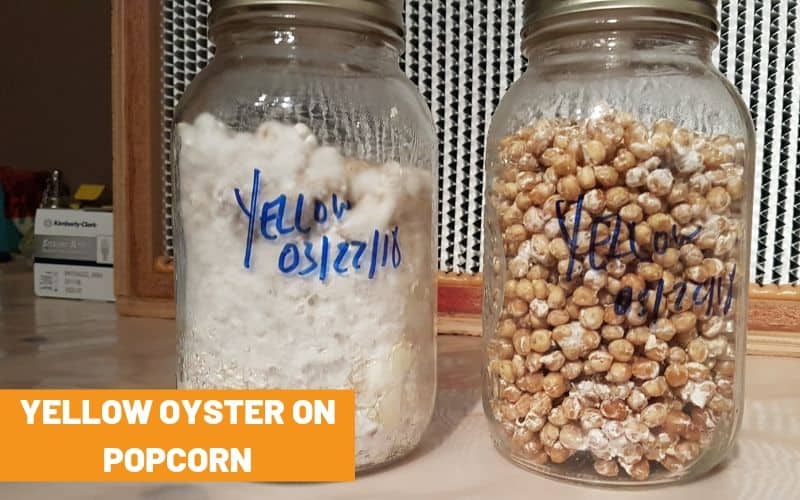
Popcorn
Popcorn spawn is actually pretty good.
Of course, it’s expensive compared to the other grains- but you can easily find it at the grocery store.
You might even have it in your cupboard already!
Compared to other grains, popcorn is huge- meaning you are going to get significantly fewer inoculation points.
It also takes a much longer time for the mycelium to colonize it- not only because the grains are large, but because there is larger gaps for the mycelium to “jump” across when colonizing.
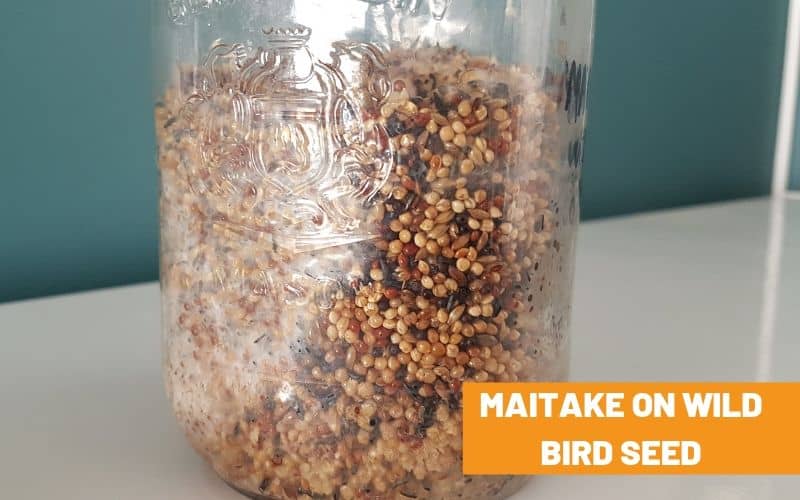
Wild Bird Seed
Wild Bird Seed (WBS) is commonly used by hobby growers, mainly because you can get a huge bag of it for cheap at any garden center or hardware store.
You would definitely not see commercial growers using birdseed. It’s is inconsistent, doesn’t hydrate evenly and isn’t universally loved by all mushroom species.
That being said, if you don’t have access to other grains, wild bird seed will work.
Just look for bird seed that doesn’t have sunflower shells in it. (that can be hard to find)
Should Grain Spawn Be Organic?
If you can get organic grain, then sure… why not?
Especially if you are buying large bags of rye grain, sorghum or millet.
For things like popcorn, brown rice, and wild bird seed you shouldn’t really worry about it.
I’m not an expert in this area, but it’s possible that some grains could be sprayed with fungicides- obviously not ideal for your mushrooms.
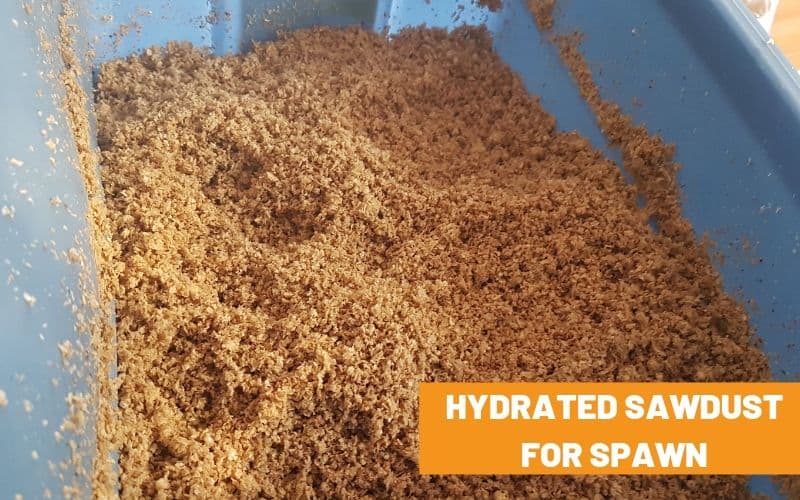
Other Types of Spawn
Grain spawn is amazing for mushrooms and is the most common material used for first-generation spawn. But it’s not the only way to propagate mushroom mycelium through subsequent generations.
Sawdust Spawn
Sawdust spawn is often used for second-generation spawn for a couple of reasons.
- It’s not as nutritious, so not as prone to contamination.
- It’s great for outdoor beds, and less prone to attract rodents and other critters.
- It “trains” the mycelium to eat hardwood, which is helpful when transferred to supplemented hardwood fruiting blocks.
The downside of sawdust spawn is that it takes longer to colonize. It also has less nutrition, which can result in a smaller yield when the mushrooms finally fruit.
Synthetic Spawn
Synthetic spawn is commonly used by Agaricus growers (button mushrooms) and produced by a few large spawn companies. It is highly particulate, colonizes fast, and is more resistant to contamination than traditional grain spawn.

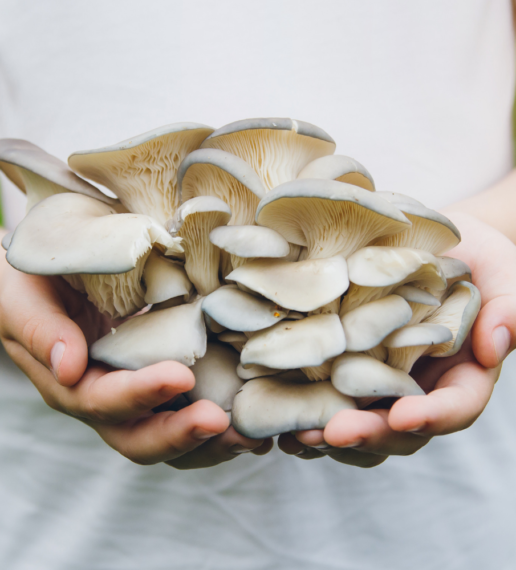
Thanks for the article, What are your thoughts on organic grass seed? I have been adding about 10% to to my grains (barley or rye) as it sucks up any extra moisture and increases the innoculation points when i spawn but i don’t see many people mention using it?
Hey Mark! Cool idea! I have not experimented with organic grass seed, but sounds like it is something that I should try 🙂
Did you end up trying grass seeds
this is great tony. I am leaning a lot from you. thank you so much.
Glad to hear it! Happy growing 🙂
hello, nice article, quick question. How much spawn (lbs) is in your bags?
Hey Vic! We don’t sell spawn right now, but it was always 2.5 lb bags.
no no, i’m just asking, because I’m getting contams in my sterilized spawn bags (15psi for 3h). I had around 6-9 lbs of rye in there and was wondering if it’s maybe too much (i guess it is).
The grain is Triticale, not sure what english term for this is. It’s basically a hybrid of rye and wheat. Seems to work fine with jars. No contams in there.
Thanks!
If it tams in bags but not jars, find another bag supplier. Your bags are the issue.
I use 3 qts dry whole oats per bag. If I remember correctly they weigh about 5-6 lbs once hydrated and cooked. Love oats because it’s cheaper than WBS and the hull is soft and grassy making for easy growth.
Hello,
I’m looking to use mycelium as a binder for waste wood. Apparently Fomes Fomentarius is great for this but I’m struggling to source the spawn. Any advice would be appreciated.
Thanks,
Sean
Hey Sean! Sounds cool. I am not sure where the best bet would be to get this spawn. You may have to instead source a culture and try and make the spawn yourself. Sounds like a cool project though, good luck!
Ecovative Design sells a grow it yourself kit that would likely work well for this.
Hey I would love to see pictures of colonizing jars of king oyster, reishi, and pink oyster…I’m colonizing them on rye grains except the reishi is on sorghum…. The mycelium for the king of seems very wispy… Would love to be able to compare…to see if what I have is normal development
I just got some alder sawdust for making spawn, but I’m disappointed as it seems a bit wet, it was covered and the company says that they get it straight from the mill…six weeks ago
Anyway I dried some in the oven 100 grams and I was left with 44 and 45 grams of sawdust on two different tests,
I did some research and it seems that this is within the range of moisture content for fresh wood but maybe on the high end.
But, is it a problem?? I feel like I detect a slight off smell to it..very slight, fungusy
Hi Tony,
Your blogs or youtube videos are so informative, I have tried to use wheat grains(as it is easy available in India) for Shiitake and it is going on really well however it is not colonizing completely it stops at some point, is this due to temperature fluctuations?
Hey there! Not sure if temp flucatuations would do that, maybe they are running into contamination?
Hi Tony, are there differences on yield between 1st generation spawn and 2nd generation?
Which is the best for inoculate to substrate?
Hi Tony,
We normally use wheat and oat but recently have been curious as to what synthetic spawn is made from. Do you have any ideas or a direction you can point me in? We are certified organic so I doubt a synthetic material will be of use to use buy I am still curious.
Thanks!
Mark
Hi there!
I’m interested in growing culinary and medicinal mushrooms on grain spawn. Would I be successful in growing shiitake mushrooms on grain spawn or does that need to grow on logs? What are the best types of mushrooms to grown on grain and are there any types that aren’t recommended? Thanks!
I have insect infested barley grain can they be used as substrate for mushroom
Thank you for all the helpful information!
Hey, can Kamut grain work as well?
If I understand it correctly, Freshcap is not yet selling spawn. Do you have a trusted source you recommend?
Hey there! Reach out to support@freshcap.com we can give you some personalized reco’s!
hi there, i have been growing oysters for a year now and use coffee ground that are thrown away by the coffeeshop across the road. As spawn I use barley, corn and buckwheat because they are easily bought instore. I would like to use rye but since it has to be shipped and the other grains work perfectly fine I don’t even try. I was wondering if other products could also be used as a spawn. Since we trow away a lot of old bread, banana peals, apple cores and other fruits and veggie is being disposed, I was wondering if it is a good idea using this to make a spawn. since we throw it away anyways and it would be a good way to use some of our garbage for a good purpose. do you have any experience with these kinds of spawn or do you stick to the grains?
I am gonna try it anyway but would love to hear your thoughts
kindest regards,
Tobias Oostdam
thank you,
Your videos/webpage contain great information.
Great videos. Is there a link on your site to purchase grain spawn?